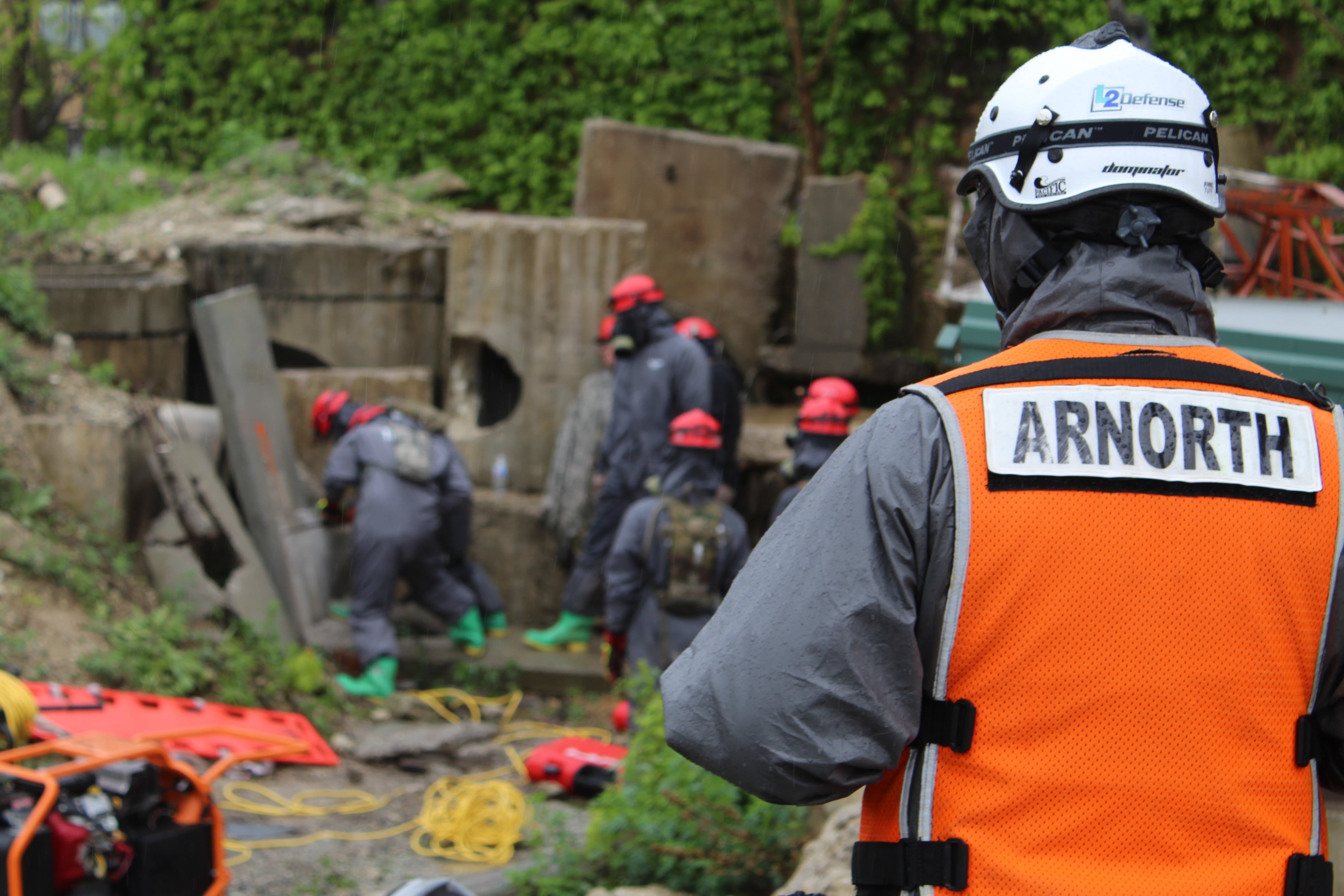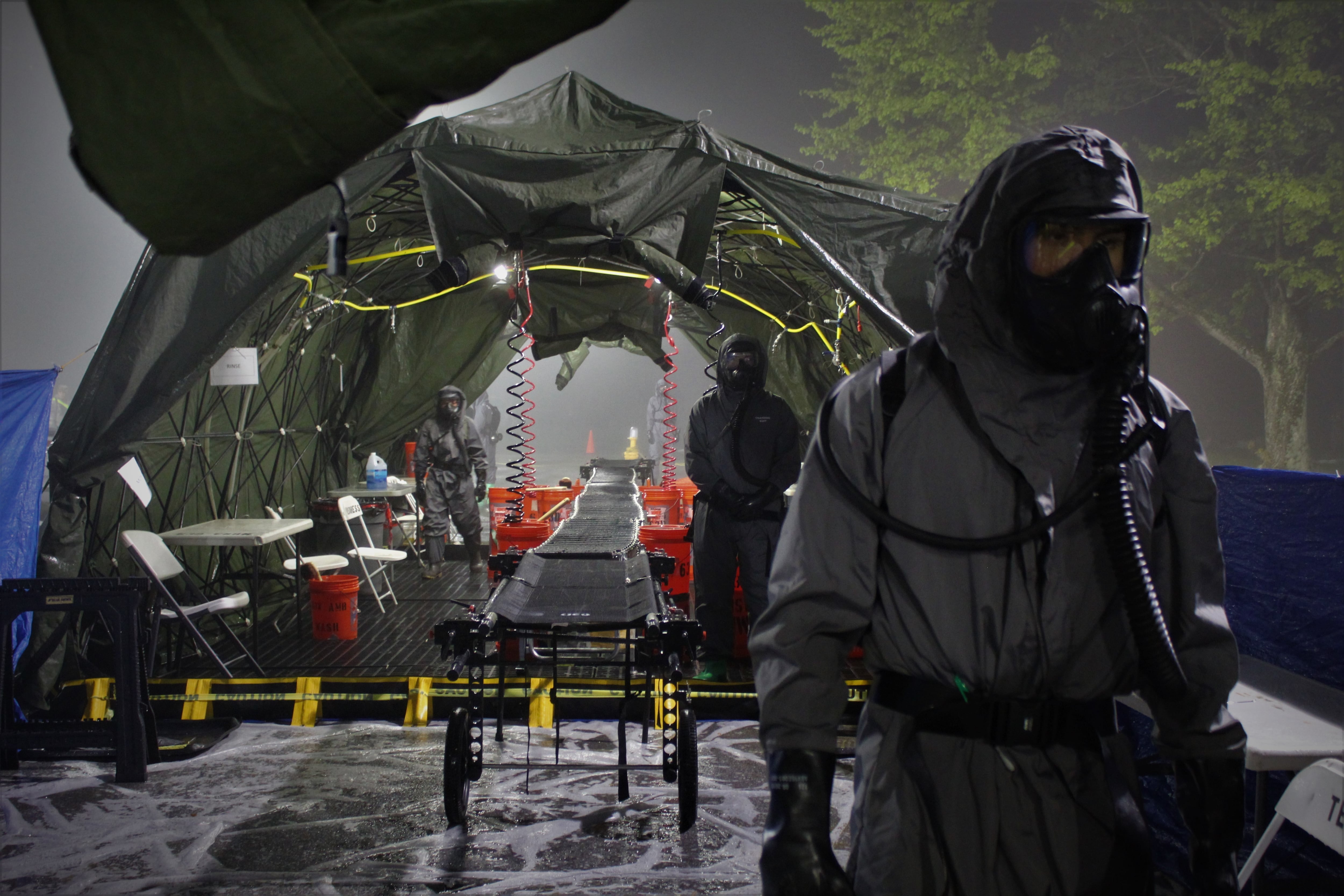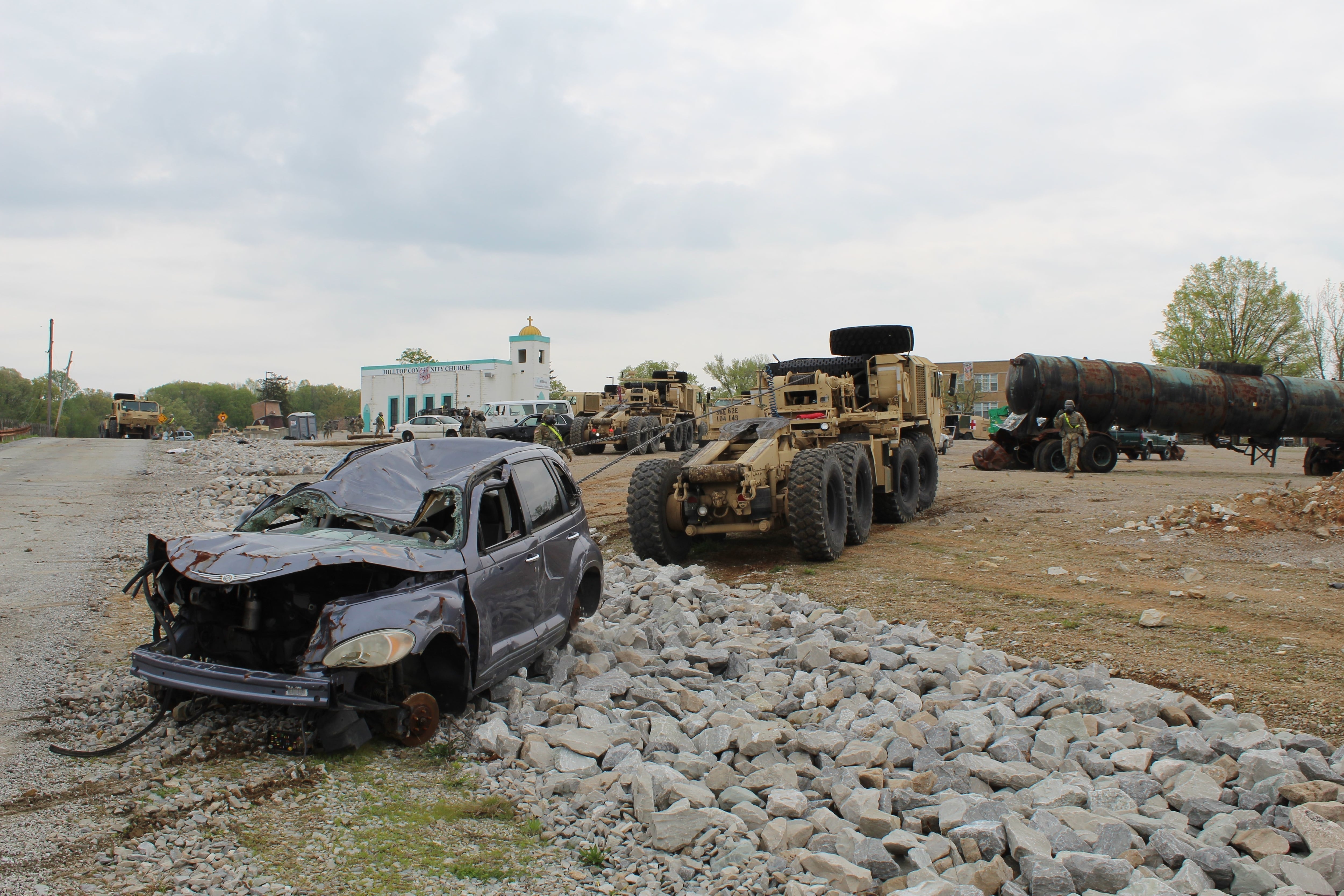Two simultaneous nuclear explosions detonate, one in Detroit the other in Phoenix. Police, fire and local emergency workers scramble to respond.
What happens next?
Right now, a group of 3,500 soldiers, a mix of Army National Guard, active-duty soldiers under U.S. Army North, 1,200 of which are reservists and other services’ members are working on that very problem.
They’ve set up tents outside Detroit and are crowding 200 or more troops into command posts to coordinate how exactly you respond to thousands of dead, tens of thousands needing decontamination or rescue and perhaps a million or more citizens who must be moved out of the impact area.
Incidents spread nearly 2,000 miles apart mean soldiers setting up satellite and other communications networks to coordinate across the country.
Meantime, other soldiers are suturing fake wounds on prosthetic body suits and caring for fake dogs with simulated wounds, as even pet care and evacuation has become part of the modern emergency response.
Generals in charge of exercises Vibrant Response and Guardian Response spoke mid-exercise this week with Army Times about how training and equipping has led to this year’s exercise and what’s in store next year and beyond.
The exercises are borne out of a decade-long effort to improve interoperability between active, Guard and Reserve with civilian agencies for homeland response, specifically chemical, biological, radiological and nuclear incidents, also called CBRN. More than half of the Army’s CBRN assets are in the Guard or Reserve.
Vibrant and Guardian Response kicked off on May 5 and are planned to conclude on May 17.

Within six hours of the incident, soldiers assigned to Maj. Gen. William Hall’s Joint Task Force Civil Support out of Joint Base Langley-Eustis, Virginia, in the incident planning cell and advanced party would load onto planes.
Hall pointed to the civilian interagency work and specifically the combat rotation experience within his ranks. While valuable, that’s not necessarily enough.
“I think this is going to be unlike anything we’ve ever dealt with in any of our experience,” Hall said.
Then, the rest of the crew has 24 hours to join them.
That’s 60 entities spread across 31 locations, mostly loading up on U.S. Air Force C-17 transport planes and headed to wherever the incident has happened, Hall said.
Once in place, their job is to coordinate the flow of the rest of what’s needed.
But while the Army and Guard are falling into place to begin vital urban search and rescue and life-saving decontamination and medical care, the Army’s not in charge.

They’re taking their mission sets from the Federal Emergency Management Agency, which will coordinate local, state, federal and military efforts.
“We’re not here to do all things for all people,” said Maj. Gen. Michael Stone, commander of Task Force 46, primarily a military police command out of Michigan.
But there are key things that the Army can bring to the tragedy — urban rescue and decontamination.
The following units were involved in the exercise:
- 46th Military Police Command, Michigan National Guard
- 369th Sustainment Brigade, New York National Guard
- 507th Engineers Battalion, Michigan National Guard
- 444th Chemical Company, Illinois National Guard
- 710th Medical Company Area Support, Illinois National Guard
- 119th Combat Service Support Battalion, New Jersey National Guard
- 133rd Composite Supply Company, New York National Guard
- 154th Quartermaster Company, New Jersey National Guard
- 475th Quartermaster Company, Army Reserve
- 198th Expeditionary Signal Battalion, Delaware National Guard
- 632nd Movement Control Team, active Army
- 105th Human Resources Company, Tennessee National Guard
- 108th Chemical Company (SCNG)
- 623rd Inland Cargo Transfer Company, Army Reserve
The Detroit Fire Department trains for decontamination annually, but only for about 1,000 victims.
A nuclear blast would result in tens of thousands of casualties, he said. That’s what the Army prepares for, he said.

The groups involved do other intermittent exercises on a smaller scale through the year to coordinate for different areas, different types of responses.
Brig. Gen. Douglas Cherry, commanding general of the 76th Operational Response Command, said that soldiers had conducted several exercises over the past two years with New York Fire Department and the Miami-Dade County Fire Department.
Stone said the next iteration would likely happen again next year at the Muscatatuck Urban Training Center and Camp Atterbury, Indiana. But in future years they are looking to do exercises in other large cities.
Last year, Stone and others conducted tabletop exercises in Detroit and other locations with local experts, academic researchers and cyber community representatives to better understand the aspects they’d have to consider when planning their response.
Stone said then that there were ongoing efforts to partner with cities such as Atlanta, Chicago, Phoenix and Cleveland in the coming years so that command groups from the various Guard units and Army North can better coordinate with the local contacts in each area.
This year saw Phoenix added to the list of participants.
Todd South has written about crime, courts, government and the military for multiple publications since 2004 and was named a 2014 Pulitzer finalist for a co-written project on witness intimidation. Todd is a Marine veteran of the Iraq War.





